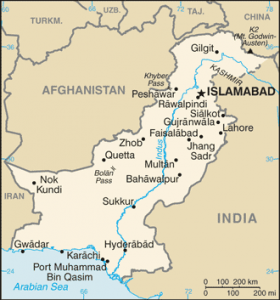A leishmaniasis outbreak in Pakistan’s northwestern region of Khyber Pakhtunkhwa prompted a World Health Organization (WHO) workshop last month in Peshawar to instruct on the diagnosis, treatment and management of leishmaniasis.

Khyber Pakhtunkhwa has reported 22,112 cases of leishmaniasis since Jan. 2014.
Dr Shabina Raza, Director-General of Health Services for Khyber Pakhtunkhwa, noting the Department of Health’s close collaboration with WHO, expressed her appreciation to WHO for importing 50,000 doses of Glucantime medicine from France for the treatment of leishmaniasis in Pakistan.
Dr Mohammad Assai Ardakani, Acting WHO Representative in Pakistan, noted that as Glucantime was an expensive medicine, a more sustainable solution needed to be found, and suggested that the medicine be registered with the Drug Authority of Pakistan. Dr Ardakani welcomed the Social Health Insurance scheme launched by the Provincial Department of Health, noting that it will reduce the burden of disease and facilitate the access of the poor to comprehensive health care services.
Training workshops are also to be organized in other provinces.
The leishmaniases are a group of diseases caused by protozoan parasites from more than 20 Leishmania species.
These parasites are transmitted to humans by the bites of the infected female phlebotomine sandfly – a tiny – only 2–3 mm long – insect vector. There are three main forms of leishmaniasis: cutaneous, visceral or kala-azar, and mucocutaneous.
Related:
- Dengue in Hanoi up 45 percent, Environmental sanitation campaign to launch
- Aunt Jemima Frozen Pancakes, Waffles & French Toast recalled due to Listeria risk
- Hepatitis A cases double, additional death reported in San Diego
- Memphis area: 4 mumps cases reported since March
- Texas reports novel H3N2v case, contact with swine reported


please add me to your e-mail list; personal e-mail: [email protected]
work: [email protected]
Thanks!